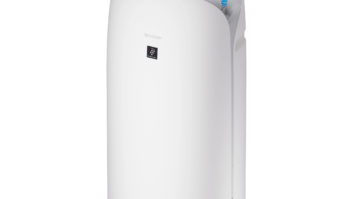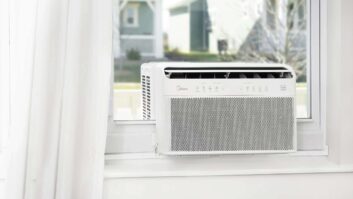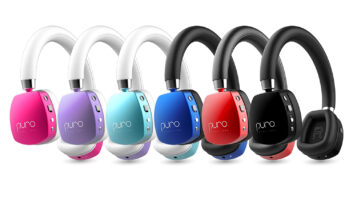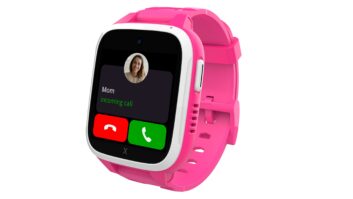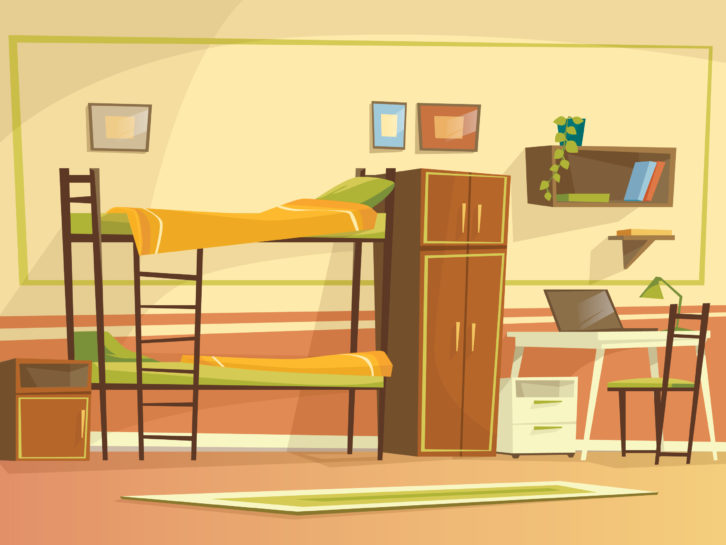
When kids away at college get sick, Mom’s chicken soup can’t be a handy option. Yet parents can help to mitigate a myriad of illnesses.
Describing a college dorm room as a petri dish is not far from the truth. Just take the average kids’ room at home and multiply it. More cold and flu viruses are in the air because of enclosed environments, unwashed clothes may be stowed in gym bags, and wet towels could be tossed in a forgotten corner—not to mention the seldom-cleaned carpeting, shared baths, and much more that you never wish to know.
Take comfort in knowing you can improve the air quality in your kids’ room by sending them back with a high-quality air purifier.
Look for a unit with a True HEPA filtration to remove 99.97 percent of airborne pollutants as small as 0.3 microns, to capture pollen, dust, and other particulates.
It’s hard enough for homeowners to remember to change air filters every few months, you can count on college students not remembering. “Unlike most air purifiers with True HEPA filters needing to be changed every few months, the True HEPA filters in Sharp Air Purifiers only need to be changed every two years. The benefits of True HEPA are there, plus the benefits of PCI,” says Peter Weedfald, the Senior Vice President of Sales & Marketing at Sharp Home Appliances.
I have lived with a Sharp Plasmacluster Ion Air Purifier in my bedroom for more than a year and can personally attest that I am breathing more freely, and it eliminates odors so well I can’t even smell my dog on her bed on the floor right next to me.
Sharp’s patented Plasmacluster Ion technology creates positive and negative ions. “They fly through the air, looking for viruses, bacteria, pet dander, mold, mildew, and odors—anything they can attach themselves to. Then the plasmacluster ion steals the hydrogen, and floats away as water vapor, while the remains of the now inactive pollutant simply fall apart,” says Weedfald. “Once the plasmacluster ions take all of the hydrogens out of a pollutant, any leftover bits normally get stuck to and whisked-away in the newly created water molecule.”
Facts About Indoor Air Quality in Dorm Rooms
According to a report from the Environmental Protection Agency (EPA), the indoor air quality (IAQ) of homes and other buildings can be up to five times more polluted than outdoor air. The EPA also estimated that people spend approximately 90 percent of their time indoors, in schools, workplaces, and at home. “For many people, the risks to health may be greater due to exposure to air pollution indoors rather than outdoors,” the report warns.
The past few years have seen several reports of students needing to be relocated after experiencing respiratory problems and other ailments such as headaches and cognitive issues, due to mold found in their dorm rooms.
Numerous studies have been conducted on the IAQ of homes, K-12 schools, and workplace environments, but until recently little has been done concerning college campuses. In August 2019, the EPA published findings of its, “Characterization of Indoor Air Quality on a College Campus: A Pilot Study.”
The study points out, “the higher education sector represents a unique environment in that it acts as a work environment for faculty, a learning environment for students, and frequently, a home environment for students.”
What parents wouldn’t be happy knowing that their college kids are housed in a brand-new building designed for efficiency and sustainability? Some buildings even qualify for LEED certification. Defined by the U.S. Green Building Council, LEED, or Leadership in Energy and Environmental Design, is the most widely used green building rating system in the world. Available for virtually all building, community, and home project types, LEED provides a framework to create healthy, highly efficient, and cost-saving green buildings.
Shockingly, the report published by the EPA said that LEED certification was found to have no positive impact on air quality. “Instead, our results suggest that while being built with efficiency and sustainability in mind, air quality measurements were higher in the LEED-certified building type,” The study measured particulate matter, formaldehyde, carbon dioxide, and nitrogen oxides in LEED-certified, retrofitted, and conventional building types on a college campus.
The report goes on to say that more research is warranted to reveal building features and human behaviors contributing to indoor exposures.
In addition to sending your college kids back to school with an air purifier, remind them to use hand sanitizer, clean surfaces and vacuum the carpet often. And don’t leave those wet towels in a pile!
Some day they might thank you.
This blog was sponsored by Sharp Electronics.





